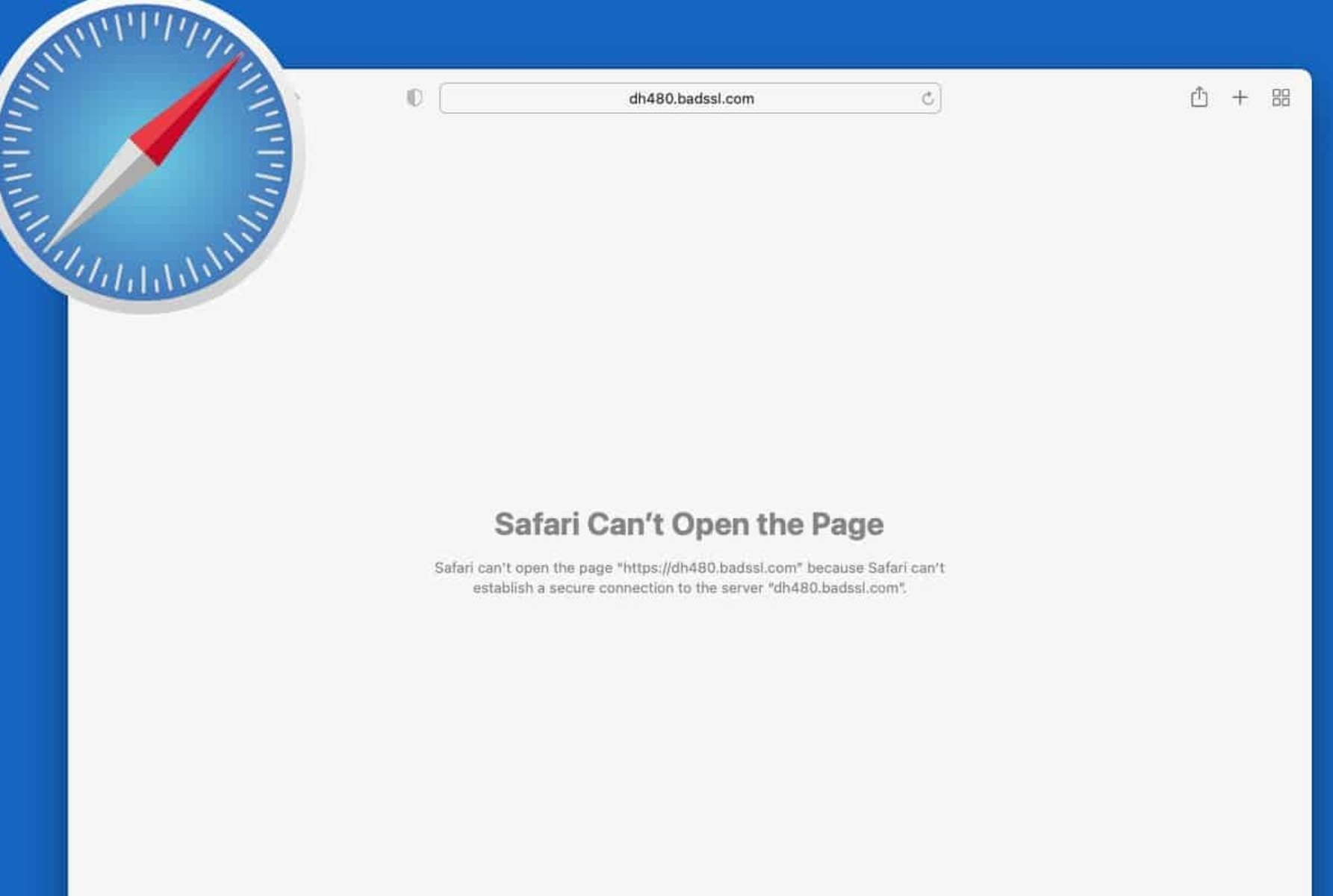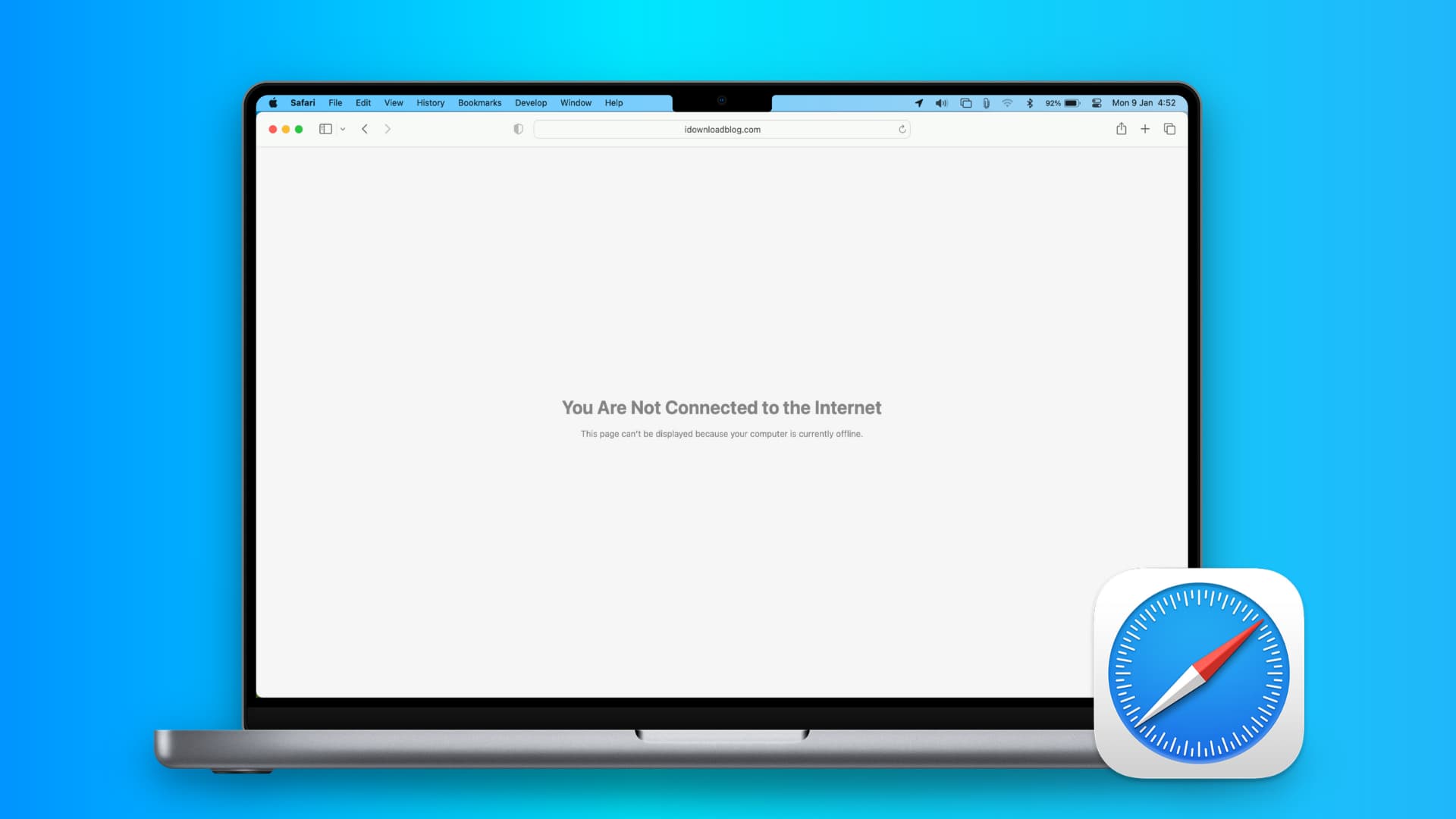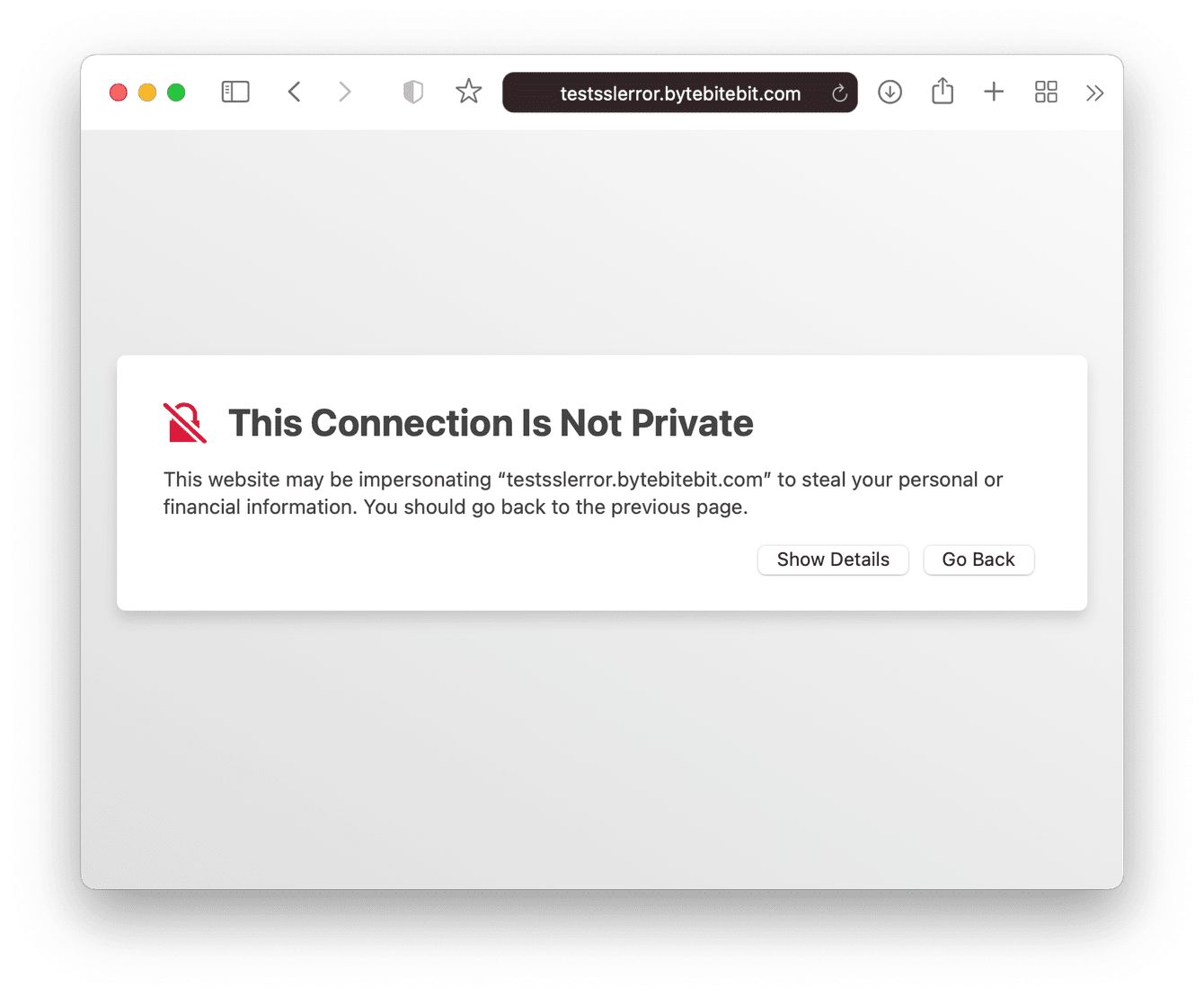Check Your Internet Connection
The first step in troubleshooting Safari's inability to establish a secure connection is to check your internet connection. A stable and reliable internet connection is crucial for secure browsing. Here's how you can ensure that your internet connection is not the culprit behind the issue:
-
Wi-Fi or Data Connection: If you are using Wi-Fi, ensure that your router is functioning properly and that you are within range. If you are using mobile data, check your signal strength and consider switching to a different network to see if the issue persists.
-
Speed Test: Conduct a speed test to determine the quality of your internet connection. There are various online tools and apps available that can help you assess your internet speed. A slow or unstable connection can lead to difficulties in establishing secure connections.
-
Network Settings: Verify that your network settings are configured correctly. Check for any proxy settings or VPN configurations that might be interfering with the secure connection process.
-
Restart Your Router: Sometimes, a simple restart of your router can resolve connectivity issues. Power off your router, wait for a few minutes, and then power it back on to see if this resolves the problem.
By ensuring that your internet connection is stable and properly configured, you can eliminate potential connectivity issues as the cause of Safari's inability to establish a secure connection. If the problem persists after confirming that your internet connection is functioning as it should, you can proceed to the next troubleshooting steps to address the issue.
Verify the Website's Security Certificate
When encountering issues with Safari's inability to establish a secure connection, it's essential to verify the website's security certificate. A security certificate, also known as an SSL certificate, plays a pivotal role in ensuring secure and encrypted communication between your browser and the website's server. Here's a detailed look at how you can verify the website's security certificate and address any potential issues:
-
Check the URL: Start by examining the website's URL. Secure websites typically begin with "https://" instead of "http://". The added "s" indicates that the website is using a secure connection. However, it's important to note that the absence of "https://" doesn't necessarily indicate a security concern, as some websites may not require encryption for all content.
-
Inspect the Padlock Icon: When you visit a secure website, Safari displays a padlock icon in the address bar. Click on the padlock to view the website's security details. This allows you to verify the authenticity of the security certificate and ensure that it is issued by a trusted certificate authority.
-
Examine Certificate Details: Safari provides the option to view the website's certificate details. By accessing this information, you can inspect the validity of the certificate, its expiration date, and the certificate authority that issued it. If any discrepancies or irregularities are observed, it could indicate a potential security issue.
-
Certificate Trust Settings: Safari maintains a list of trusted certificate authorities. If the website's certificate is issued by a trusted authority, it should be automatically validated. However, if the certificate is self-signed or issued by an untrusted authority, Safari may prompt a security warning, indicating that the website's identity cannot be verified.
-
Potential Security Warnings: In some cases, Safari may display security warnings when encountering issues with a website's certificate. These warnings serve as indicators of potential security risks and should be taken seriously. Understanding and interpreting these warnings can provide insights into the nature of the security concern.
By meticulously verifying the website's security certificate, you can gain valuable insights into the integrity of the website's encryption and authentication mechanisms. Addressing any discrepancies or security warnings related to the certificate can contribute to resolving Safari's challenges in establishing a secure connection. If issues persist after verifying the security certificate, further troubleshooting steps can be explored to ensure a secure and seamless browsing experience.
Clear Safari's Cache and Cookies
Clearing Safari's cache and cookies can often resolve issues related to the browser's inability to establish a secure connection. The cache and cookies stored by Safari serve various purposes, such as storing website data to enhance browsing speed and retaining login information for convenience. However, over time, this stored data can become outdated or corrupted, potentially leading to connectivity and security issues. Here's a detailed look at the process of clearing Safari's cache and cookies and its potential impact on resolving secure connection problems:
-
Accessing Safari's Preferences: To initiate the process of clearing the cache and cookies, start by opening Safari and accessing the "Preferences" from the Safari menu. Alternatively, you can use the keyboard shortcut "Command + ," to access the Preferences window.
-
Navigating to Privacy Settings: Within the Preferences window, navigate to the "Privacy" tab. This section of Safari's settings allows you to manage website data, including cache and cookies. Click on the "Manage Website Data" button to proceed to the next step.
-
Removing Cache and Cookies: Upon clicking the "Manage Website Data" button, Safari presents a list of websites with stored data. You have the option to remove individual website data by selecting specific entries or clear all website data at once. Click on the "Remove All" button to clear the cache and cookies stored by Safari.
-
Confirmation and Restart: After clearing the cache and cookies, Safari may prompt for confirmation. Once confirmed, it is advisable to restart the browser to ensure that the changes take effect. Close and reopen Safari to initiate a fresh browsing session with cleared cache and cookies.
-
Impact on Secure Connection: Clearing Safari's cache and cookies can have a positive impact on the browser's ability to establish secure connections. By removing outdated or corrupted data, you eliminate potential obstacles that may have been hindering the secure communication between Safari and websites. This process can effectively reset the browsing environment, allowing for a clean slate when establishing secure connections.
-
Potential Login Implications: It's important to note that clearing cookies may result in the loss of saved login information for websites. After clearing the cache and cookies, you may need to re-enter login credentials for various websites. Additionally, website preferences and settings associated with stored cookies may be reset.
By following the steps to clear Safari's cache and cookies, you can effectively address potential issues hindering the browser's ability to establish secure connections. This process serves as a fundamental troubleshooting step in maintaining a secure and optimized browsing experience with Safari. If the issue persists, further investigation and troubleshooting may be necessary to identify and resolve the underlying cause of the connectivity challenge.
Update Safari to the Latest Version
Ensuring that Safari is running the latest version is crucial in addressing potential issues related to secure connections. Updates often include bug fixes, security enhancements, and compatibility improvements, all of which can contribute to a more reliable and secure browsing experience. Here's a detailed exploration of the process of updating Safari to the latest version and its significance in resolving secure connection challenges:
-
Accessing the App Store: To initiate the update process, launch the App Store on your Mac. The App Store serves as the central hub for managing and updating various applications, including Safari.
-
Navigating to Updates: Within the App Store, navigate to the "Updates" tab located in the toolbar at the top of the window. This section provides a comprehensive list of available updates for installed applications, including Safari.
-
Locating Safari Update: In the list of available updates, locate Safari and check if a new version is available for installation. If an update for Safari is listed, click on the "Update" button next to the Safari entry to commence the update process.
-
Installation and Restart: Upon initiating the update, the App Store will begin downloading and installing the latest version of Safari. Depending on the size of the update and your internet connection speed, the process may take some time. Once the update is installed, it is advisable to restart your Mac to ensure that the changes are fully applied.
-
Enhancements and Security Patches: Updating Safari to the latest version brings forth a range of benefits, including performance enhancements, feature updates, and crucial security patches. Security vulnerabilities that may have been present in previous versions are often addressed in the latest updates, bolstering the browser's ability to establish secure connections with websites.
-
Compatibility and Stability: Newer versions of Safari are optimized for compatibility with evolving web standards and technologies. By staying up to date with the latest version, you ensure that Safari is equipped to handle modern web environments, thereby contributing to the stability and reliability of secure connections.
-
User Experience Improvements: In addition to security and performance enhancements, updates to Safari may introduce user interface improvements and new features that can enrich the browsing experience. These updates contribute to a more seamless and intuitive browsing environment, complementing the browser's ability to establish secure connections effectively.
By proactively updating Safari to the latest version, you harness the benefits of improved security, enhanced performance, and optimized compatibility, all of which play a pivotal role in addressing challenges related to secure connections. This fundamental step in maintaining a secure browsing environment empowers users to leverage the full potential of Safari while mitigating potential security risks associated with outdated browser versions. If issues persist after updating Safari, further troubleshooting and support options can be explored to ensure a secure and uninterrupted browsing experience.
Disable Browser Extensions and Plugins
Disabling browser extensions and plugins can be a crucial step in troubleshooting Safari's inability to establish a secure connection. While extensions and plugins can enhance the browsing experience by adding functionality and features to the browser, they can also introduce compatibility issues, security vulnerabilities, and conflicts that may hinder the establishment of secure connections. Here's a detailed exploration of the process of disabling browser extensions and plugins and its significance in addressing secure connection challenges:
-
Accessing Safari's Preferences: To begin the process of disabling extensions and plugins, open Safari and navigate to the "Preferences" from the Safari menu. Alternatively, you can use the keyboard shortcut "Command + ," to access the Preferences window.
-
Selecting the Extensions Tab: Within the Preferences window, click on the "Extensions" tab. This section provides a comprehensive list of installed extensions that augment Safari's functionality. Disable all extensions by unchecking the box next to "Enable [Extension Name]."
-
Managing Plugins: After addressing extensions, proceed to the "Websites" tab within the Preferences window. From the left-hand sidebar, select "Plug-ins." Here, you can manage various web plugins that Safari utilizes for displaying content such as Flash, Java, and other multimedia elements. Disable unnecessary or outdated plugins that may pose security risks or compatibility issues.
-
Restarting Safari: After disabling extensions and plugins, it is advisable to restart Safari to ensure that the changes take effect. Close and reopen the browser to initiate a fresh browsing session with disabled extensions and plugins.
-
Impact on Secure Connection: Disabling extensions and plugins can mitigate potential conflicts and security vulnerabilities that may have been impeding Safari's ability to establish secure connections. By removing third-party elements that interact with web content, you create a more controlled and streamlined browsing environment, reducing the likelihood of connectivity issues.
-
Security and Performance Considerations: Many security incidents and performance issues can be attributed to problematic browser extensions and plugins. Disabling these elements not only addresses immediate connectivity challenges but also contributes to a more secure and efficient browsing experience overall.
By meticulously disabling browser extensions and plugins, you can effectively address potential obstacles hindering Safari's ability to establish secure connections. This fundamental troubleshooting step empowers users to create a more controlled and secure browsing environment, thereby enhancing the overall reliability and security of the browsing experience. If the issue persists, further investigation and support options can be explored to identify and resolve the underlying cause of the connectivity challenge.
Restart Your Device
Restarting your device is a fundamental yet often overlooked troubleshooting step that can effectively address a wide range of technical issues, including Safari's inability to establish a secure connection. This simple yet powerful action can clear temporary system glitches, refresh network configurations, and reset various software components, potentially resolving the underlying causes of connectivity challenges. Here's a detailed exploration of the significance of restarting your device and its impact on addressing secure connection issues:
Addressing System Glitches
When your device runs continuously for extended periods, it may encounter temporary glitches and software hiccups that can impact its overall performance, including the ability to establish secure connections. Restarting the device allows it to undergo a clean shutdown and subsequent boot-up, effectively clearing any transient system issues that may have been affecting Safari's functionality.
Network Configuration Refresh
Restarting your device prompts a reinitialization of network configurations, which can be instrumental in resolving connectivity challenges. By restarting, your device renegotiates network connections, refreshes IP settings, and reestablishes communication with network components, potentially eliminating obstacles that hinder secure connections in Safari.
Software Component Reset
Various software components and background processes on your device may encounter errors or become unresponsive over time, leading to potential connectivity issues. A device restart initiates a comprehensive reset of these components, allowing for a fresh start and potentially resolving underlying software-related issues that impact Safari's secure connection capabilities.
Memory and Resource Optimization
Restarting your device clears the system's memory and optimizes resource allocation, which can have a positive impact on Safari's performance and its ability to establish secure connections. By freeing up memory and resetting resource usage, a device restart creates a more conducive environment for Safari to operate efficiently and securely.
Comprehensive Troubleshooting Step
In many cases, a simple restart can serve as a comprehensive troubleshooting step that addresses a myriad of potential issues, including those related to secure connections. It is often recommended by technical support professionals as an initial action to take when encountering various device and software-related challenges.
By incorporating the practice of restarting your device into your troubleshooting routine, you can harness its potential to effectively address secure connection issues in Safari, contributing to a more reliable and secure browsing experience. If the problem persists after restarting your device, further investigation and support options can be explored to identify and resolve the underlying causes of the connectivity challenge.
Contact the Website's Support Team
If you have exhausted all the troubleshooting steps and continue to encounter issues with Safari's secure connection to a specific website, reaching out to the website's support team can provide valuable insights and assistance in resolving the issue. The website's support team is equipped to address site-specific concerns and can offer guidance tailored to the intricacies of their platform. Here's a detailed look at the significance of contacting the website's support team and the potential benefits it can yield:
-
Site-Specific Expertise: The support team possesses in-depth knowledge of the website's infrastructure, security protocols, and technical intricacies. By reaching out to them, you gain access to individuals who are well-versed in the specific configurations and requirements of their platform, allowing for targeted troubleshooting and resolution strategies.
-
Security Protocol Alignment: Websites may have unique security protocols and configurations that can impact the establishment of secure connections with Safari. Engaging the support team enables you to align Safari's security settings with the website's requirements, ensuring compatibility and adherence to the site's security standards.
-
Diagnostic Insights: The support team can conduct diagnostic assessments to identify any site-specific issues that may be impeding secure connections with Safari. By leveraging their expertise, you can gain insights into potential server-side configurations, security certificate nuances, or other factors that may be contributing to the connectivity challenge.
-
Guided Troubleshooting: Support representatives can provide guided troubleshooting steps tailored to the website's environment. This personalized assistance can encompass specific browser settings, compatibility checks, and targeted actions to address any site-specific elements that may be affecting secure connections.
-
Timely Updates and Notifications: Contacting the website's support team allows you to stay informed about any ongoing maintenance, security updates, or known issues that may impact secure connections. This proactive communication ensures that you are aware of relevant developments and can adjust your browsing approach accordingly.
-
Feedback and Collaboration: Engaging with the support team fosters a collaborative approach to resolving secure connection issues. By providing feedback on your experiences and actively participating in the troubleshooting process, you contribute to the site's ongoing optimization and security enhancement efforts.
By proactively reaching out to the website's support team, you can leverage their expertise and site-specific insights to address challenges related to Safari's secure connections effectively. This collaborative approach not only facilitates issue resolution but also contributes to a more secure and optimized browsing experience for all users. If the issue persists, the support team can offer further assistance and escalate the matter as needed, ensuring that your browsing interactions with the website remain secure and seamless.

























